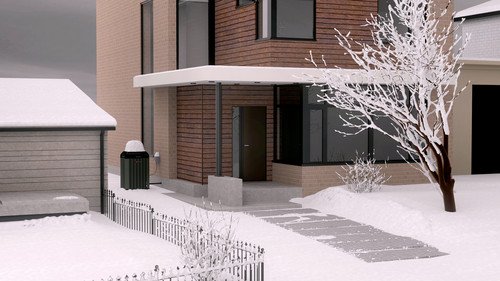
With high energy bills and the importance of keeping warm during the coldest season of the year, knowing how to best keep the heat in during the winter can be valuable and important. Let’s take a look at some of the best ways to keep your home toasty this winter!

1. Low-cost Draught Proofing Measures
For starters, while approaches to keeping heat in, including efforts to improve your home’s energy efficiency, can be expensive (e.g. wall insulation, whether solid or cavity wall), there are many low-cost measures worth considering.
Here are some inexpensive draught-proofing measures you may want to introduce to your home this winter:
● Install door draught-stoppers on suitable doors in your home
● Adding decorator’s caulk to flooring and skirting boards*
● Fit draught-proofing window strips
*Alternatively, you might want to add flexible fillers. Either way, follow the manufacturer’s instructions carefully if undertaking this work DIY.
2. Boiler And Radiator Maintenance
Boiler and radiator maintenance can not only help your heating system last longer but potentially lower heating bills and help maintain a certain level of energy efficiency for longer (thus meaning it will do a better job at keeping the heat in).
Firstly, having a qualified heating engineer to perform boiler servicing annually is important to keep you and everyone in your home safe as well as maintain the efficiency and functionality of your boiler.
Beyond that, you should have your heating system power flushed by a professional around once every five years. Power flushing involves chemically flushing sludge and rust out of your heating system. By doing so, hot water will be free to move through the pipes with ease, thus protecting your heating system’s efficiency.
Lastly, you should also have your radiators bled twice a year or more if deemed necessary. Bleeding radiators is a process that involves removing air pockets from within radiators. These air pockets can lead to cold spots, in turn lowering the efficacy of your radiator.
By bleeding them, you can help your radiators meet their full potential for longer. Unlike power flushing and boiler servicing (each of which requires the work of a qualified heating engineer), it is possible to bleed radiators DIY. However, you must follow the manufacturer’s instructions very carefully. If in any doubt, hire a professional.
3. Have Double- or Triple-Glazed Windows Installed
While relatively expensive, double- or triple-glazing can make a significant difference to your home’s ability to keep the heat in.
Starting with double glazing, this is generally priced somewhere in the region of £1,000 to £2,000 per window. Many homes will save somewhere in the region of £100 to £200 each year in lowered heating bills with this option.
On the other hand, triple glazed windows cost about £1,000 to £4,000 per window. These windows could save you perhaps £30 to £100 per year more on your energy bills than double-glazing (so about £130 to £300 annually).
4. Get Into Good Habits
Simply improving habits at home can help keep the heat in better. The most obvious step to take is to ensure you keep doors closed, particularly during the winter to keep rooms warm.
Beyond that, it’s a good idea to keep curtains open during the day (particularly on sunny days) to let the thermal energy from the sun heat up spaces in your home. Then, as the sun sets be sure to close curtains to keep that heat in and heat from your radiators in.
5. Purchase Thermal Curtains
Speaking of curtains, you may wish to invest in thermal curtains. Thermal curtains cost around £40 to £150 in most cases but can cost more (e.g. custom thermal curtains).
Thermal windows can lower heat loss by 25%. This may apply to just one room or your home at large, depending on how many rooms have thermal curtains fitted.
6. Get a Smart Thermostat
A smart thermostat is another measure worth looking into to help keep the heat in. A smart thermostat, which will likely cost somewhere in the region of £100 to £300, can improve your heating system’s energy efficiency, thus lowering heating bills and aiding in your effort to keep the heat in for a lower cost.
7. Have Insulation Added to Your Home
If you have a sufficient budget, you may be interested in having insulation added to your home.
Among the most popular forms of insulation are loft and wall insulation. Loft insulation generally costs somewhere between £300 and £1,000. However, depending on the type of insulation used and the size of the property, it can cost significantly more (e.g. blown fibre insulation for a detached property).
8. Move Any Obstructions Away from Radiators
Lastly, where feasible you should move obstructions away from radiators (e.g. furniture). Either way, no furniture or other obstructions should make physical contact with radiators or be so close as to be a hazard.
Of course, though, moving obstructions away completely is beneficial for home heating as it will allow your radiators to properly heat up the surrounding space.
